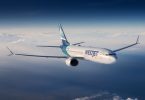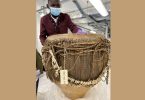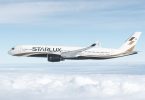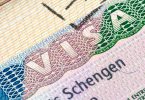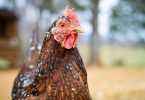Uganda Wildlife Authority, the organization in charge of managing and protecting Uganda’s national parks and protected areas, has revised gorilla tracking rates for 2024-2026 by a nominal increase of US$100 in order to meet its increasing conservation and operational demands budget requirements that are needed to manage all its 10 national parks, 12 wildlife reserves, 5 community wildlife management areas and 13 wildlife sanctuaries, some of which host Ramsar sites and world heritage sites. UWA has also announced the opening of two gorilla tracking groups, increasing the total number of groups to 28.
This was however not enough to calm the concerns of private tour operators, who questioned the timing of the announcement as they are committing binding contracts with buyers, as we enter the international exhibition season including the ongoing ITB Berlin, in Germany.
Protracted negotiations between the top UWA top management and the Association of Uganda Tour Operators(AUTO) Board to rescind the directive which was initially issued on 17th January resolved with an appeal to the Minister of Tourism Wildlife and Antiquities, Honorable Tom Butime, culminating in a meeting at the Ministry headquarters in Kampala which yielded mixed success for the tour operators including rescheduling the increase for bookings for permits already purchased only between March 31 and April 1, 2024.
AUTO Board Chair Civy Tumusime questioned the timing on the premise that:
- UWA should first address the basic infrastructure needs by completing and improving the tourism roads to the national parks and protected areas.
- That tour operators have fixed contracts with their agents that they were bound yet UWA issued the directive with immediate effect without prior notice pausing potential losses and legal implications.
- That the timing of the increase is premature considering that there was prior consultative engagement with the private sector in July 2023 with no mention of increase in tariffs.
- That the industry has yet to recover from the covid pandemic, ebola and pockets of insecurity.
Uganda Wildlife Authority has since pledged concessions by reintroducing low season tariffs at US$500 for Gorilla tracking in the months of March,April May and November, yet to be formalized.
In a recent live audio engagement with tourism stakeholders on February 25, 2024, hosted on” -X Space” by tourism journalist Olivier Nakalembe Hangi Bashir, UWA Head of Communications justified the increment citing Section 65 of Wildlife Act 2019 that provides for a Wildlife Fund to run conservation activities including anti-poaching, trainings, renumeration of staff etc. which is what the demands the need for the increase in tariffs.
He argued that “UWA does not get appropriation of funds from the consolidated fund. It is among those institutions that have been allowed to generate its own resources which are declared and then appropriated by government ,not from the consolidated fund and therefore as an institution it has to ensure that it is able to do conservation work and for that to work this institution is supposed to have money.We operate a budget of about UGX 123 Billion (US$31million) annually against the required 200 Billion (US$51million) required to do work, including well maintained roads, motivated rangers, internet connectivity, vehicles, detection and prevention of the spread of diseases, and treatment of sick animals including those that are injured by poachers”.
He added that “We have to adapt to modern technology in conservation including drones and equipment in order to minimize human wildlife conflict and know where the animals are at a particular time.
That to ensure this the organization has to meet adequate staff , ..”if you look at the (International Union for the Conservation of Nature) IUCN ranger animal density, we are doing so badly in terms of the recommended area of surface area that a ranger should be controlling.This including uniforms fuel , salaries etcetera inform all the needs as an institution and it turns out that the only source of revenue is through collections at the gates inside the protected areas to plan the strategic plan against the budget”.
Hangi acknowledged that Tour Operators are their biggest clientele and provide UWA with 90 percent of its income. It is basically the needs of the institution that informs the tariffs. The management team proposes tariffs and sends them to the Board of Trustees. Stakeholders are consulted and it taken to the Board to approve and pass where appropriate.
The increment entail :
Gorilla Permits for Foreign Non Residents from US$700 to US$800, For Foreign Residents from US$600 to US$700 for the Rest of Africa a new category at US$ 500 and for East Africans from UGX 250,000( approx.US$65) to UGX 300,000 (approx.US$76).
This is still way below the cost of a Gorilla tracking permit in neighboring Rwanda which costs US$1,500 for Foreign Non-Residents.
Chimpanzee and primate permits have also been increased from US$200 to US$250 for Foreign Non Residents US$150 to US$200 Foreign Residents and for East Africans from UGX 150,000 (appr. US$39) to UGX 180,000 (appr. US$47).
The increment comes with the following directives to streamline purchases as follows:
- Permits for Foreign Non-Residents and the Rest of Africa shall be sold to only through tour operators licensed by Uganda Tourism Board
- No onsite payments for permits allowed
- No requests for extra permits shall be approved amongst other directives.
(eTN): Uganda Wildlife Authority Raises Gorilla Tracking Fees | re-post license | post content





